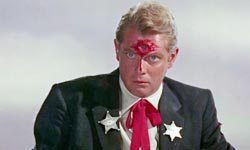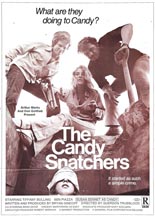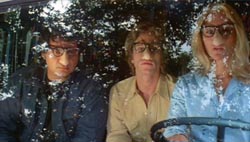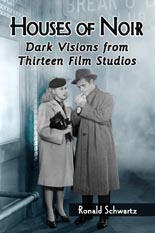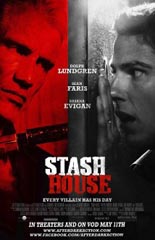
 There’s really no need for you to give Stash House a try; after all, Warner Home Video sure didn’t. The name of star Sean Faris is misspelled on the back of the DVD package, and when the disc is inserted into your player, you’ll be presented with two menu options: “Play” and “Languages.” Choose the latter, if not “Eject.”
There’s really no need for you to give Stash House a try; after all, Warner Home Video sure didn’t. The name of star Sean Faris is misspelled on the back of the DVD package, and when the disc is inserted into your player, you’ll be presented with two menu options: “Play” and “Languages.” Choose the latter, if not “Eject.”
Faris (Never Back Down) is David Nash, a douchebag banker who buys his veterinary wife (Briana Evigan, 2010’s Mother’s Day) a house without showing her first, much less telling her about his plans. Contrary to real life, she loves it anyway. While in the middle of christening the gated residence, they discover a loose wall that hides kilo upon kilo of heroin.
 Showing up to reclaim it and eradicate witnesses is well-armed assassin Andy Spector (Dolph Lundgren, Universal Soldier: Day of Reckoning). Andy and his right-hand man (Jon Huertas, Right at Your Door) want in; the Nashes want out.
Showing up to reclaim it and eradicate witnesses is well-armed assassin Andy Spector (Dolph Lundgren, Universal Soldier: Day of Reckoning). Andy and his right-hand man (Jon Huertas, Right at Your Door) want in; the Nashes want out.
In hands more skilled than director Eduardo Rodriguez (Fright Night 2: New Blood) and first-time screenwriter Gary Spinelli, the cat-and-mouse scenario could be molded into something — if not something great, at least something worth watching. To start, the Nashes would have to be recast and/or rewritten to become likable; as is, viewers are inclined to root for Spector … and for Lundgren to find better vehicles for his quirky brand of he-man charisma than predictable, color-by-numbers thrillers of low wattage and lower intelligence. —Rod Lott

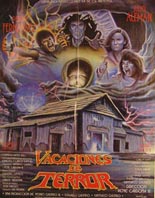
 Fernando (Julio Alemán) is an architect who has it all: a loving wife, three kids, another on the way, a teenage niece living under their roof and an appreciation for life’s finer things, i.e. cow-eye tacos. And now he has even more, inheriting a vacation home from his aunt. So what if it “looks like a haunted house,” as his daughter, Gaby (Gianella Hassel Kus), says? It’s his, and it calls for a celebration!
Fernando (Julio Alemán) is an architect who has it all: a loving wife, three kids, another on the way, a teenage niece living under their roof and an appreciation for life’s finer things, i.e. cow-eye tacos. And now he has even more, inheriting a vacation home from his aunt. So what if it “looks like a haunted house,” as his daughter, Gaby (Gianella Hassel Kus), says? It’s his, and it calls for a celebration! 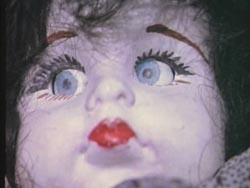
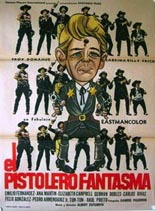
 Albert Zugsmith’s
Albert Zugsmith’s 